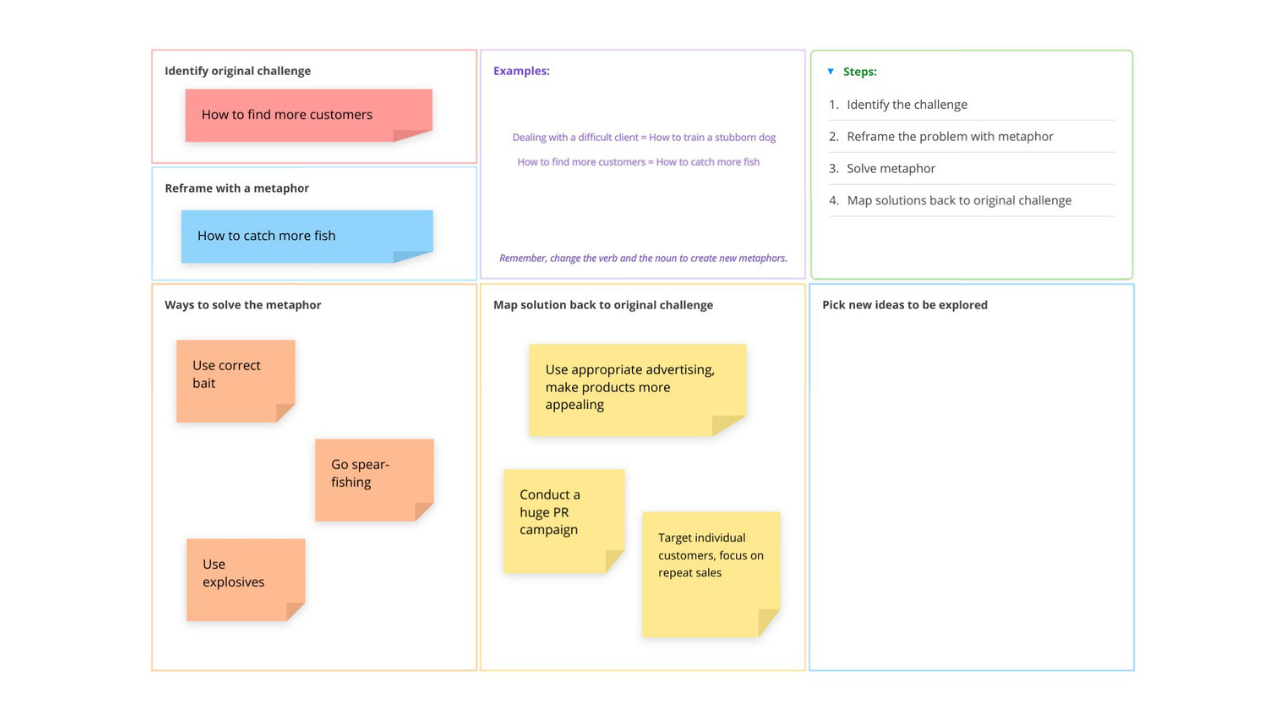Metaphoric Thinking Canvas template

The Metaphoric Thinking template helps you to identify creative ideas and solutions to your business challenges by reframing your thinking using metaphors. This template was created by Ayoa CEO and creative thinking expert, Chris Griffiths, and is featured in his book, The Creative Thinking Handbook.
What is the Metaphoric Thinking Canvas?
When you’re faced with a challenge, the Metaphoric Thinking Canvas is a problem-solving tool that enables you to be more innovative and uncover effective solutions by using metaphors. By using the canvas to reframe your problem with a metaphor, you’ll be more open to new avenues of thinking that you might not otherwise have stumbled upon.
Why use the Metaphoric Thinking Canvas?
When it comes to brainstorming solutions to a problem, it can be easy to fall victim to common thinking errors that can keep you trapped in old habits. By using metaphors instead of your actual problem when generating solutions, you’ll place your challenge in a new context; as a result, you’ll be able to interpret the problem from a different standpoint and trigger different ideas from various sources of inspiration. This is because using metaphors will trigger your mind to look for similarities between concepts that might have initially seemed unrelated.
How to use our Metaphoric Thinking Canvas template
To access the template, sign up to Ayoa. Once you've signed up, navigate to the homepage to create a new whiteboard, mind map or task board and choose this template from the library.
At the top of the template, use the relevant box to define your challenge in a single sentence (e.g. ‘how to find more customers’).
By swapping out the verb (the process) and the noun (the content), reframe your challenge with a metaphor e.g. ‘how to find more customers’ becomes ‘how to catch more fish’. Write this in the box underneath your challenge.
Brainstorm ways to solve the metaphor you have created. For instance, possible solutions to ‘How to catch more fish’ may include ‘Use correct bait’, ‘go spear-fishing’ and ‘use explosives’. Use sticky notes to add these ideas to the template.
Map these solutions back to your original challenge. In other words, relate these actions or responses to your problem. As an example, ‘go spear-fishing’ could become ‘target individual customers and focus on repeat sales’, while ‘use explosives’ might suggest that you should organize a significant PR campaign. Again, add these ideas to the template using sticky notes.
Choose the ideas with the most potential to take forward!
